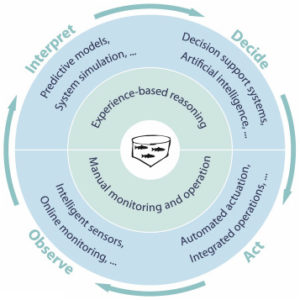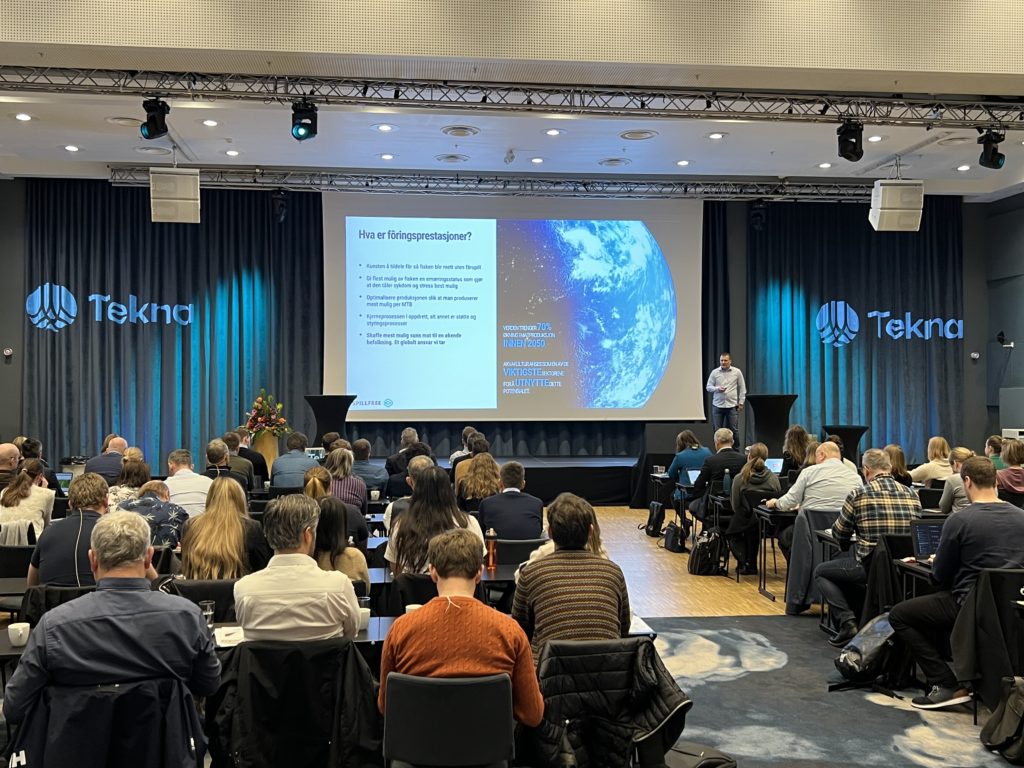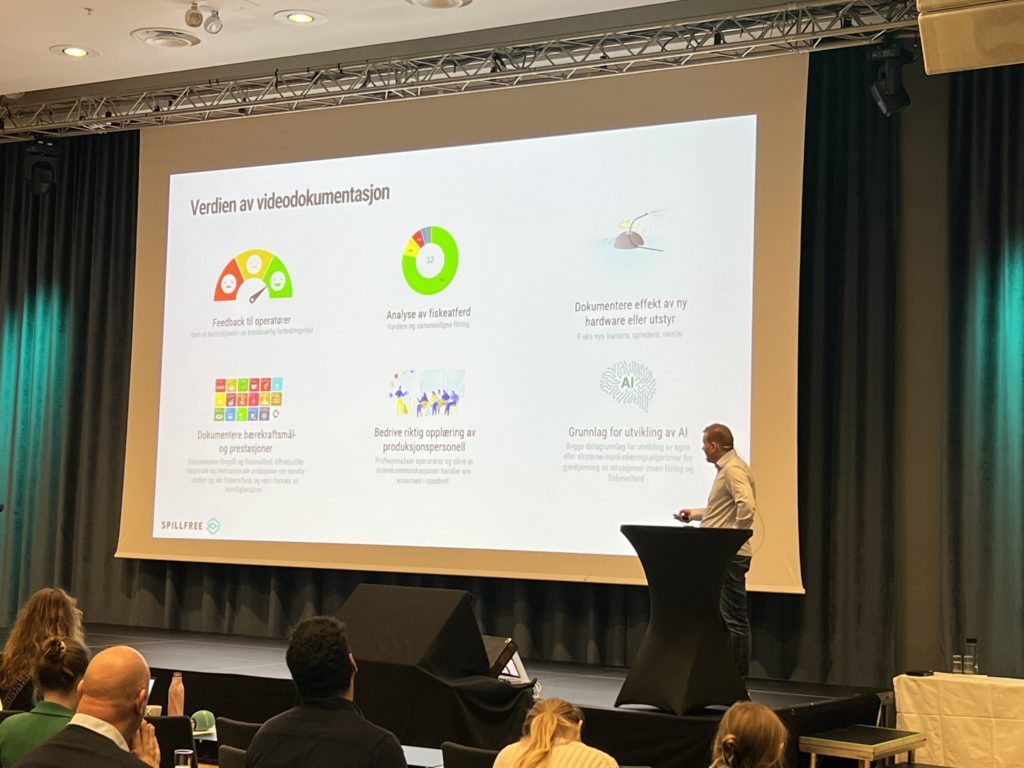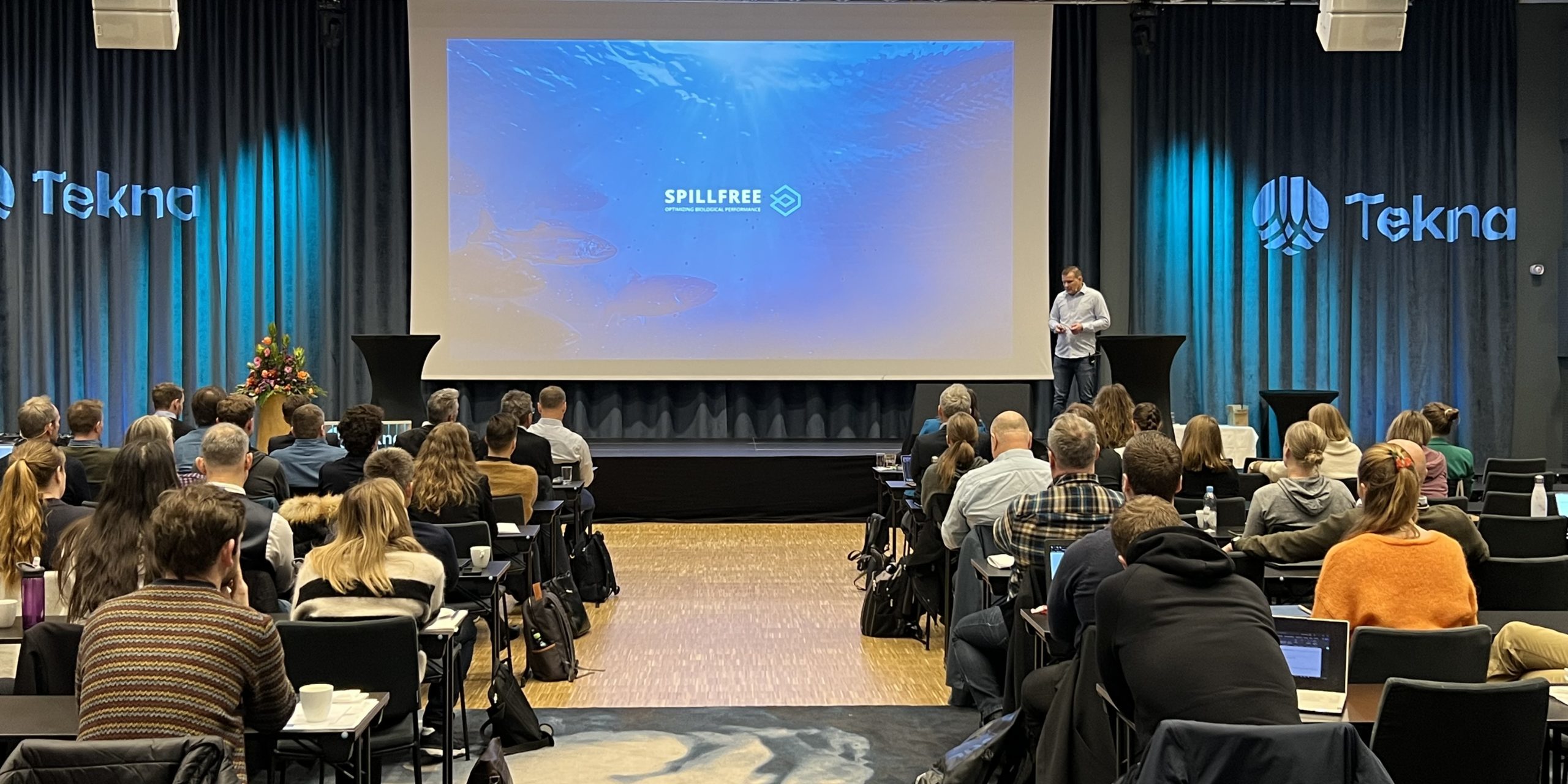How to use video documentation to develop and improve feeding of farmed fish?
During Teknas Havbrukskonferanse at Scandic Nidelven, Spillfree’s CEO, Vidar Myhre, spoke about video documentation and how this can be used as a tool to achieve increased fish growth, reduced feed waste, improved fish health as well as increased competence and motivation among feeding operators.
Precision fish farming and fish welfare
The subject of the aquaculture conference was “Precision fish farming and fish welfare”. Several speakers referred to the report about “Precision fish farming” (PFF), which refers to a new framework for improving production in aquaculture, with the aim of stimulating the aquaculture industry to move from experience-based to knowledge-based development. This includes the main objectives of the PFF, which are to 1) improve accuracy, precision and repeatability in aquaculture operations; 2) facilitate more autonomous and continuous monitoring of biomass; 3) provide more reliable decision support; and 4) reduce reliance on manual work and subjective judgments, thereby improving personnel safety. The report also points out new technology and future opportunities in precision aquaculture. “This is an incredibly exciting topic in feeding, also one of our important focus areas at Spillfree”, says Vidar Myhre.

Illustration of Precision fish farming (by Martin Føre, Ph.D)
– The aquaculture industry lacks a feedback system for daily feeding performance. Without this, it is impossible to improve and carry out precision feeding. Spillfree brings onboard a system for feedback through video analysis, Vidar Myhre points out.
What exactly is feeding performance?
The world needs a 70% increase in food production by 2050. Aquaculture is considered one of the most important sectors to exploit this potential. For fish farmers, feeding is the most important activity and fish growth is the largest profit driver. It becomes all the more important to prevent high rates of feed waste, and not least to focus more on maximizing the growth potential of the fish. This provides more food for a growing population in a more sustainable way.
During Spillfree’s presentation at the Tekna conference, Vidar pointed out the importance of feeding performance and not least the importance of the feeding operators’ role. “Feeding fish is a complex activity in which several important parameters must be taken into account. It is an art to feed optimally and master the exploitation of growth potential. Feeding is the core of fish farming”, says Vidar Myhre.
– Feeding performance is about allocating the feed so that the fish are satisfied without feed waste. It is also about giving as many of the fish as possible a nutritional status that allows them to withstand disease and stress as best as possible. For the fish farmers, it is important to optimize production, so that you produce as much as possible per MTB. All in all, it is about providing as much healthy food as possible to a growing population – a global social responsibility we want to be a part of, Vidar points out.

The importance of video documentation and how this can be used for daily measurement and development
– If you look at video documentation in a global perspective, including other industries, the use is quite massive. Documentation with video and pictures is vastly used, for example on construction sites, hospitals and schools in relation to training and safety precautions. It is used to document traffic incidents, and for underwater research using ROVs. It is also used in sports, for example in soccer/football, to look back at highlights and discuss good/bad passing plays or good/bad counterattacks. Generally speaking, it is used to measure, evaluate and analyze – precisely to develop and improve the status quo, Vidar points out.
– But how is the use of video documentation in the aquaculture industry? And especially within the feeding profession? Historically, the benchmark in feeding has been the amount fed, fish growth, bFCR and other average-figures. We believe this is a poor check for whether the feeding performance is good or not. This quality is checked through videos and photos from strategic feeding situations, Vidar Myhre says.
– Spillfree primarily uses video documentation to measure and evaluate the customers’ daily feeding performance. Being able to look back at stored feeding videos also plays an important role in the training of operators, as well as in the development of the understanding of feeding behaviour, and not least as material for the development of AI algorithms for automatic detection in feeding. The potential here is huge, continues Vidar Myhre.
The value of video documentation
Spillfree summarizes the value of video documentation in six points, which can ultimately lead to increased fish growth and profit for fish farmers:
- Give feedback to operators: As a control point in a “continuous improvement wheel”
- Analysis of fish behaviour: Assessing and comparing feeding situations
- Documenting the effect of new hardware or equipment: E.g. new cameras, spreaders, winches, feed types
- Documenting sustainability goals and achievements: Documenting feed waste and fish welfare, satisfying national and international ambitions for lower emissions and increased fish welfare, and not least being at the forefront of governmental requirements
- Proper training of production personnel: Professionalize operators and ensure that internal communication is about the essence of fish farming
- Test arena for AI: Building data bases for the development of own or external machine learning algorithms for recognizing situations in feeding and fish welfare



